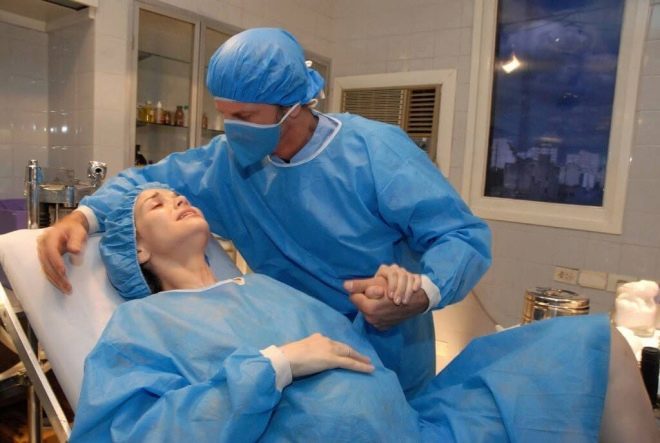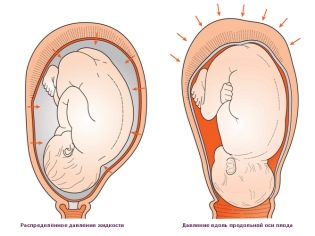What is the difference between attempts from labor?
The success of childbirth largely depends not only on the qualifications of medical personnel. Equally important is given to the behavior of the woman and her understanding of the processes occurring in her body during childbirth. Therefore, knowledge of the differences between attempts from labor battles will have to be very useful. In this article we will explain what the difference between them is and how to distinguish one from the other.
What it is?
Contractions and attempts are completely different stages of childbirth. The labor contractions begin. They are rhythmic and periodic contractions of the uterine muscles. These cuts take place so that the cervix can open up and provide the child with the opportunity to get out of the womb.
The period of fights lasts quite long. First, start weak and short contractions, which are called latent. They are repeated every 30-40 minutes and last no more than 15-20 seconds. Gradually, the intensity of the spasms increases, they become stronger and more frequent, and the intervals of rest between them become shorter.
At the end of the latent period, the uterus contracts about once every 10-15 minutes, the duration of the contraction is about 40 seconds. At this point, with normal uncomplicated labor, cervical dilatation reaches 3 centimeters. By the same time you need to arrive at the hospital. The latent period of contractions lasts up to 12 hours for nulliparous and up to 8-10 hours for those who give birth again.
Already in the hospital begins the active phase of contractions. Contractions of the uterine smooth muscle are increasing and increasing. The fight lasts on average about 50-60 seconds, the fight repeats every 4-5 minutes. The period lasts from 3 to 5 hours in primiparous and somewhat less in women with experience. During this time, the neck opens another 4 centimeters, the disclosure reaches 7 centimeters by the end of the period.
Last fights - transitive. They are the most painful and strong. Repeat every 1-2 minutes, in general, lasting from half an hour in multiparous to one and a half hours in women who give birth for the first time. Uterus opening becomes maximum - 10-12 centimeters. At this period of contractions ends and begins the second stage of labor - attempts.
Attempts are a reflex contraction of the muscles of the uterus and peritoneum. Their global task is to push the baby into the genital tract. This process is called expulsion of the fetus.
The difference on the physical level is that the woman cannot control the contractions, but she is able to control the attempts by helping the baby to be born into the world.
How to understand that the fight began?
Determining the onset of contractions is not as difficult as it seems to be pregnant. True labor contractions are distinguished by rhythmicity from false cuts and precursors. From the very beginning they occur with a certain frequency and frequency. It will be enough for a couple of hours to watch your own state with a stopwatch or a watch with a second hand, and it will become clear that the real fights started.
With true contractions, neither a change in body position, nor a warm shower, nor thyme tea, nothing that helped with false contractions will help. It is impossible to slow down or stop these true contractions of the uterus.
How to understand that there are attempts?
After the contractions reach their apogee, the woman has an overwhelming desire to immediately go to the toilet and empty her intestines. It is associated with the pressure of the fetal head on the fully open cervix.This is the first sign of the beginning attempts. A woman needs to urgently draw the attention of medical staff to their feelings. At this stage, the mother is usually transported to the hospital. Begins the most important stage of childbirth.
It is impossible to push simply, obeying the desire to do it. There may be ruptures of the cervix, vagina. Disobedience in childbirth is fraught with the occurrence of birth injuries in the baby. Therefore, it is necessary to push the woman exclusively at the command of the obstetrician who is giving birth, not forgetting about proper breathing.
Possible difficulties
Stop the development can any of the stages of the generic process. Contractions can weaken, and then there will not be a full disclosure of the cervix. Attempts without reflex contractions will also not be effective, and the process of giving birth to a child will slow down. In the first case, one speaks of such a phenomenon as primary generic weakness, and in the second, of the secondary weakness of the tribal forces.
In both cases, doctors will do everything possible to stimulate the generic processes, but in the absence of a response from the female body, if the child’s condition is threatening, they will have an emergency caesarean section.
Predict the likelihood of complications during childbirth, no one will undertake. In many ways, this is a matter of chance. But the correct behavior of the woman will help her to avoid unpleasant situations or not to aggravate the force majeure circumstances that have arisen. For this you need:
- do not shout - cry requires high energy costs;
- breathe properly - during contractions, deeply and slowly; during attempts - deep breathing and holding the breath at the time of the attempt;
- listen to a doctor or obstetrician - they know better when it is time to push and when it is necessary to be patient.
You can learn more about the differences between contractions and attempts in more detail from the following video.



















